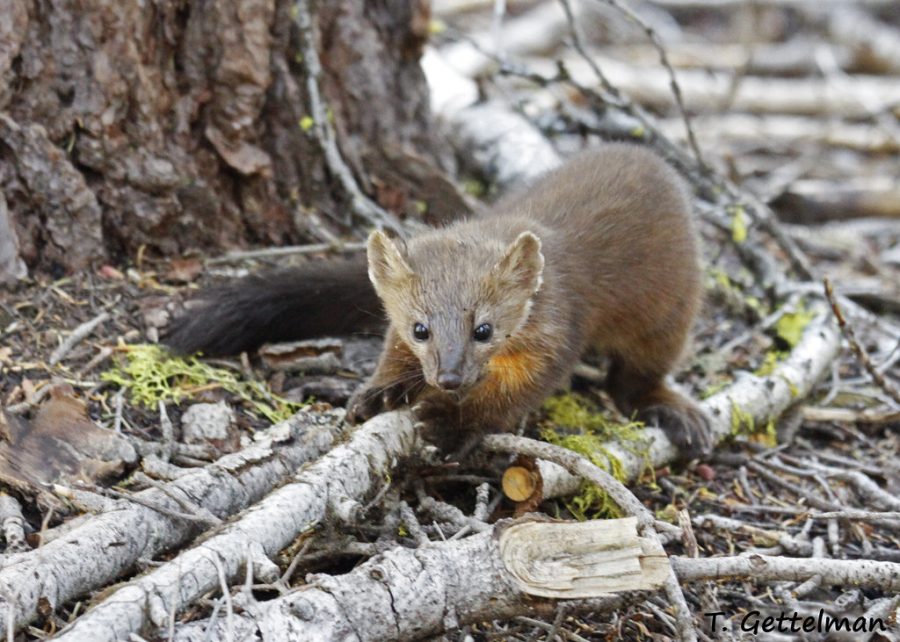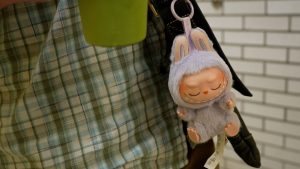Return of the Marten
Pennsylvania may be welcoming a new neighbor to the state’s forests by early 2024.
They may look adorable, but martens, once abundant in Pennsylvania, are fearsome hunters.
April 14, 2023
Pennsylvanians may soon witness one of the greatest natural redemption stories in the history of the state’s wildlife. It’s the possible return of the marten.
Martens, also known as American Martens or Pine Martens, are mammals only slightly larger than a gray squirrel. Martens are most commonly compared to their close relative, the weasel. Martens are actually members of the mustelid family, a group of small mammals including badgers, wolverines, minks, stotes, weasels, and otters. They spend the majority of their time safely tucked away in dens, trees, or hollow logs. Martens are naturally omnivorous animals with a diet primarily consisting of berries, nuts, and insects. However, like the rest of their relatives, martens are also adept hunters, specially primed for rodent hunting.
The PA Game Commission recently passed a motion to introduce the marten, once a thriving species here, into the wilderness by early 2024.
Besides improving biodiversity, martens would act as natural exterminators. Their proficient rodent-killing skills may help to decrease the state’s vermin population, keeping rats, moles, and voles out of homes.
In addition, martens could potentially cause a tourism boom for Pennsylvania. As elk, white tailed deer, and wild turkeys show, it’s clear that tourists are willing to expend their cash resources in order to experience unique PA wildlife.
Just 120 years ago, martens were quite common in Pennsylvania and surrounding states. Martens thrived in the northeast climate, adapting well to the vast, lush forests. The fate of Pennsylvania’s martens, however, was practically sealed when English colonization began in North America and the species became prized for its thick coat. The profitable trade of fur trapping took off, eradicating far too many martens in the process.
It didn’t help that gamekeepers declared war against martens. Because of the species’ expert hunting skills, it was poised to easily rip through partridge and pheasant populations that hunters once relied on. So, they went from being hunted for fur to being over hunted out of spite.
With the following years of settlement, and inevitable deforestation, martens became increasingly rare and desperate for shelter. The last few on the eastern seaboard disappeared between the 18th and 19th centuries.
But with the knowledge ecologists possess today regarding forestry and hunting, martens may be able to return to PA in relative security.
Should the marten make a triumphant return to the Keystone State, residents should possess some basic background knowledge regarding their new neighbors.
Despite their aggression towards rodents, martens do not intentionally attack common household pets, such as a dogs and cats. Any animal much bigger than itself is most likely off the menu. However, martens have been known to break into chicken coops. These instances are often isolated, as most coops are already predator-proof by design.
Additionally, martens are primarily nocturnal hunters, meaning that they will rarely encounter a family pet. Pennsylvanians will rarely see this skilled hunter mangle a rat in the dead of night, but the lack of rodents and vermin-born diseases will certainly be noticed.
Due to their cute, furry appearance, martens may seem to be ideal pets, but the practice is largely discouraged. Martens may have gained the nickname “tree cats,” but they certainly aren’t as cuddly as a calico. With retractable claws similar to a cheetah’s and a voracious hunting spirit, martens will see humans only as obstacles between them and their food. They also dislike handling and require ample space to thrive.
Though an astounding 92% of Pennsylvanians and 92% of hunters support the marten’s return, some concerns have been raised in the farming community.
Many farmers note that martens have a long history of poultry hunting in the US. Farmers currently are facing difficult economic and environmental circumstances, so they worry that martens could add to the burden, driving prices up for consumers and making livestock husbandry far more difficult.
Also, like all mammals, martens may unfortunately catch rabies. While it’s not common or extreme in these Mustelidae, Martens are prone in general to disease, parasitism, and infection, just as most creatures are.
Despite the few drawbacks, martens can bring a slew of positive change to Pennsylvania wildlife, fighting rodent overpopulation and disease. Their inclusion in the ecosystem may even bring communities together in order to appreciate unique wildlife.
Animal reintroduction programs have been highly successful in the past when done correctly. Take the Yellowstone wolves, for example. Due to overhunting, the wolf population in Yellowstone National Park plummeted to extinction, causing the entire food web to collapse in on itself. Without intervention, the Yellowstone ecosystem would have crumbled. However, by meticulously reintroducing wolves in small amounts, the park recovered quickly.
The human race is the only species on the planet that can actively harness the world’s natural resources on a global scale. While this power is often used for selfish purposes, stories such as the return of the marten demonstrate that human ingenuity can be employed in the interest of the greater good..













